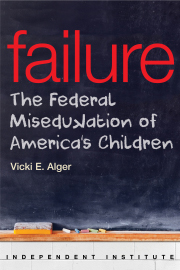The Trump administration has voiced strong support for school choice with federal dollars. Direct government funding, however, raises many concerns. As the old maxim says, “He who pays the piper calls the tune.” The risk becomes clear when we look at federal aid to the nation’s colleges, which is up tenfold from the early 1970s.
The strings attached to federal funding of higher education have grown in scope and intrusiveness for years. There’s no reason to believe a federally funded K–12 school choice program would avoid a similar fate. Government controls can, of course, be enacted at the state level, but at least any damage from a failed state policy is confined to that state.
Fortunately, several states are showing greater interest in school choice. Last spring, for example, Arizona enacted the country’s most expansive choice measure ever: an education savings account (ESA) program in which almost any student may eventually be able to enroll. Parents who don’t want their child to attend a public school need only to inform the state of their desire to participate. The state will then send at least 90 percent of the school’s per-student base funding into the child’s account.
Parents may use the ESA to pay for tuition, textbooks, online courses, tutoring, special-education therapies, and other educational tools and services. Regular expense reporting and auditing will help ensure that parents use the money as intended.
ESAs hold tremendous potential. By empowering parents to seek a variety of education service providers, they foster a more dynamic education marketplace. By unshackling those providers from the constraints of a rigid public-school system, they encourage innovation aimed at serving the needs of the individual child.
In doing so, they allow unprecedented customization of education—a far cry from the one-size-fits-all vision of the Department of Education. No longer could a bureaucrat override the judgement of a loving parent better aware of their child’s particular needs and fully invested in promoting their child’s best interests.
If there is a sensible role for the federal government in the school choice movement, it may be simply to use the bully pulpit to promote state-level programs. Federal funding would probably lead to the same regulations on once-independent schools that have stifled public institutions. This is a lesson we can’t afford to ignore.









